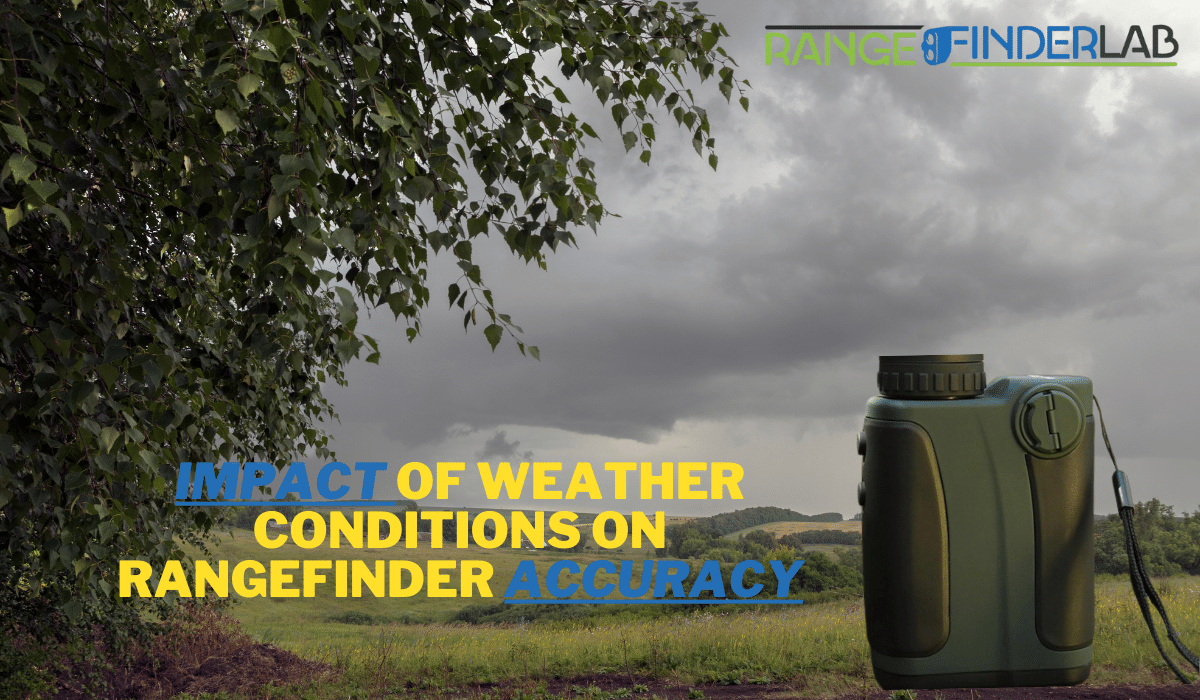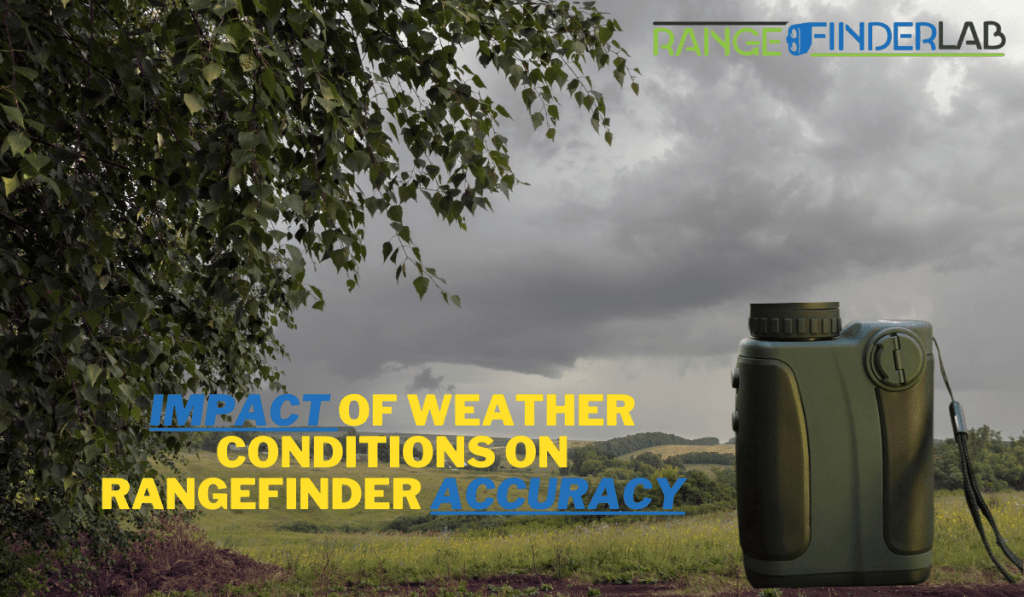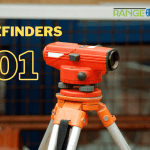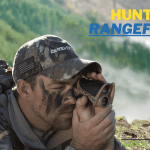

Rangefinders, a cornerstone tool in precision measurement, have cemented their place in various activities, from golfing and hunting to surveying and photography. These devices, known for measuring distances accurately and swiftly, have transformed how professionals and enthusiasts approach their tasks, enabling them to make more informed decisions based on precise data.
In this article, we will explore how weather conditions affect rangefinder accuracy, delve into the technical aspects of these challenges, and provide insights and tips on optimizing rangefinder use in less-than-ideal weather scenarios. This knowledge is critical not only for maintaining the integrity of the measurements but also for extending the longevity and reliability of the rangefinders themselves.
Table of contents
- Weather Conditions and Rangefinder Performance
- Technical Analysis: Rangefinders in Adverse Weather
- Maximizing Rangefinder Accuracy in Challenging Conditions
- Expert Insight On The Impact of Weather Conditions on Rangefinder
- Technological Solutions and Future Advancements
- Frequently Asked Questions (FAQ)
- Conclusion
Weather Conditions and Rangefinder Performance
Understanding how various weather conditions affect rangefinder functionality is crucial for users who depend on their accuracy in diverse environments.
How Different Weather Conditions Affect Rangefinder Functionality
- Rain: Rain can significantly impact laser rangefinders. The water droplets can scatter or absorb the laser beam, making it challenging for the device to get a clear, direct reflection from the target. This scattering can lead to less precise measurements or even an inability to lock onto a target.
- Fog: Fog presents a similar challenge as rain. The tiny water droplets suspended in the air can diffuse the laser beam. In dense fog, the laser might not reach the target effectively, leading to inaccurate readings or failure to measure distance.
- Snow: Snow can scatter the laser beam like rain and fog. The snowflakes can reflect the laser light before reaching the intended target, resulting in incorrect distance readings.
- Bright Sunlight: While not as obstructive as the other conditions, bright sunlight can also affect rangefinder performance, especially for laser models. Intense light can interfere with the rangefinder’s sensor, making it difficult to differentiate the laser beam from the ambient light, which can reduce accuracy.
Specific Impacts of Conditions Like Rain, Fog, Snow, and Bright Sunlight
- Reduced Accuracy: All these weather conditions primarily lead to reduced accuracy in distance measurements. The laser beam’s interference in laser rangefinders or visibility issues in optical models means the readings can be off by significant margins.
- Difficulty Locking onto Targets: In conditions like heavy rain or fog, rangefinders, particularly laser types, may struggle to lock onto a target due to the laser beam’s dispersion.
- False Readings: In snowy conditions, laser rangefinders might give false readings if the laser beam reflects off snowflakes instead of the intended target.
- Delayed Response Time: Adverse weather conditions can increase the time it takes for a rangefinder to provide a reading, as the device may need to send out multiple pulses or attempt to filter out atmospheric interferences.
- Potential Damage to the Device: While many modern rangefinders are built to withstand harsh conditions, prolonged exposure to extreme weather can still potentially damage the device.
Recognizing and understanding the impact of these weather conditions on rangefinders is essential for users who rely on their precision. In the following sections, we will explore ways to maximize rangefinder accuracy despite these challenges and discuss the maintenance required to ensure rangefinders remain functional and reliable in all weather conditions.
Technical Analysis: Rangefinders in Adverse Weather
Deep Dive into the Technical Aspects of How Rangefinders Process Signals in Different Weather Conditions
Rangefinders, particularly laser models, rely on emitting a beam of light and receiving the reflected signal to calculate distances. In adverse weather conditions, the interaction between the laser beam and environmental elements becomes a critical factor influencing accuracy.
- Rain and Snow: In rain or snow, the laser beam can scatter as it encounters water droplets or snowflakes. This scattering can cause the beam to deviate from its path, leading to less accurate measurements. Additionally, water droplets or snowflakes can partially absorb or reflect the laser beam, preventing it from reaching the target or returning sufficiently to the rangefinder.
- Fog: Fog presents a unique challenge due to its density and the tiny water droplets suspended in the air. These droplets can scatter the laser beam, similar to rain, but can also absorb the laser light more significantly, diminishing the strength of the signal that returns to the rangefinder. The laser might not reach the target in dense fog, failing to provide a reading.
- Bright Sunlight: In bright sunlight, the primary issue is the potential saturation of the rangefinder’s sensor. The intense ambient light can overpower the reflected laser signal, making it difficult for the rangefinder to distinguish the specific signal needed for distance calculation.
Limitations and Capabilities Under Various Environmental Factors
Understanding the limitations of rangefinders in different weather conditions is crucial for accurate usage:
- Reduced Range: One standard limitation in adverse weather is the reduction in the effective range of the rangefinder. The interference caused by environmental elements often means that rangefinders cannot measure distances as far as they can under precise conditions.
- Accuracy Variance: The accuracy of rangefinders can vary significantly based on weather conditions. Users might experience larger margins of error or inconsistent readings in challenging weather.
- Response Time: The time it takes for a rangefinder to provide a reading can increase in adverse weather, as the device may struggle to process the weakened or scattered signals.
- Signal Processing Technology: Advanced rangefinders often incorporate technology designed to mitigate the effects of adverse weather. For instance, some models include algorithms to differentiate between the target signal and background noise, enhancing accuracy in challenging conditions.
In summary, while rangefinders are highly accurate tools, their performance can be impacted by adverse weather conditions. Understanding these limitations and the technology behind rangefinders’ signal processing can help users adapt their usage accordingly, ensuring more reliable measurements even in less-than-ideal environmental conditions.
Maximizing Rangefinder Accuracy in Challenging Conditions
Tips and Techniques for Using Rangefinders Effectively in Adverse Weather
- Adjusting for Weather Interference: Aim for larger, more reflective targets in rain or snow to increase the chances of getting an accurate reading. Some rangefinders have settings to compensate for rain or snow, so utilizing these features can be beneficial.
- Utilizing Enhanced Modes: Many modern rangefinders have enhanced modes for specific weather conditions. Activating these modes can improve accuracy when dealing with fog, rain, or bright sunlight.
- Calibration in Varied Conditions: Regularly calibrating your rangefinder in different weather conditions can help maintain its accuracy. Familiarizing yourself with how your device behaves in various environments will enable you to make necessary adjustments on the fly.
- Taking Multiple Readings: In adverse weather, taking multiple readings and using the average or the most consistent reading can help offset inaccuracies caused by environmental interference.
- Manual Overrides: In some situations, using manual overrides (if available) to ignore specific signals (like raindrops) can effectively get more accurate measurements.
Maintenance and Care for Rangefinders to Ensure Longevity and Accuracy
- Regular Cleaning: Keep the lens and sensors clean. Use a soft microfiber cloth to gently wipe away moisture, dust, or debris. Avoid using harsh chemicals that could damage the lens coatings.
- Proper Storage: Store the rangefinder in a dry, temperature-controlled environment. Extreme cold or heat can affect the electronic components. A protective case is ideal for preventing damage from moisture and dust.
- Battery Maintenance: For battery-operated rangefinders, ensure the batteries are in good condition. Cold weather can drain battery life more quickly, so carrying spare batteries or using lithium, which performs better in cold weather, can be helpful.
- Avoid Direct Exposure: Minimize direct exposure to harsh weather conditions when not in use. Prolonged exposure to rain, snow, or extreme sunlight can deteriorate the rangefinder’s external and internal components.
- Check Seals and Casings: Regularly check the integrity of seals and casings to ensure they are not compromised. This is crucial for maintaining the rangefinder’s weather resistance and overall functionality.
- Professional Servicing: If you notice persistent issues with accuracy or if the rangefinder has been exposed to severe weather conditions, consider professional servicing to ensure all components function correctly.
Following these tips and adequately maintaining your rangefinder can significantly enhance its performance and reliability, even in the most challenging weather conditions. Regular care and understanding how to adapt to different environmental factors are crucial to ensuring that your rangefinder remains dependable in all activities.
Expert Insight On The Impact of Weather Conditions on Rangefinder
Personal Experiences with Rangefinders in Various Weather Conditions
Throughout my experiences with rangefinders in diverse activities, I’ve encountered and adapted to various weather conditions, each presenting unique challenges. On the golf course, I’ve used rangefinders under the glaring sun, where reflections and bright light make it difficult to get accurate readings. I learned to shade the device with my hand or position myself differently to avoid direct sunlight on the lens.
In hunting, I’ve faced the unpredictability of fog and rain. Once, while hunting in a lightly forested area, a sudden onset of fog made it nearly impossible to get a precise reading. I switched to a rangefinder with a fog mode, which improved accuracy significantly, though it still required patience and multiple readings for confirmation.
During winter photography sessions, dealing with snow presented a challenge. The rangefinder’s laser would sometimes reflect off snowflakes, giving erroneous distances. I found that aiming at darker, non-reflective surfaces provided more reliable measurements.
Unique Perspective on Adapting to and Overcoming Weather-Related Challenges
My experiences have taught me that understanding the capabilities and limitations of your rangefinder is crucial in overcoming weather-related challenges. Here are some insights:
- Know Your Equipment: Familiarize yourself with your rangefinder’s features and settings. Knowing how to switch to a weather-appropriate mode quickly can make a significant difference.
- Adapt and Compensate: In adverse weather, be prepared to adapt your technique. This might mean taking multiple readings for accuracy or aiming at different types of targets than you usually would.
- Preparation is Key: Anticipating weather conditions and being prepared can save time and frustration. This could mean carrying a waterproof cover for your rangefinder or having backup batteries in cold weather.
- Patience and Persistence: Sometimes, getting an accurate reading in challenging weather conditions requires patience. It is often necessary to ensure accuracy, even if it means multiple attempts.
- Continuous Learning: Each weather condition can teach something new about using rangefinders. Embrace these challenges as learning opportunities to enhance your skills and knowledge.
My journey with rangefinders has been a learning curve, especially regarding weather adaptability. These challenges have enhanced my technical skills and enriched my understanding of how environmental factors interact with technology. Adapting to and overcoming these challenges is a testament to the rangefinder’s versatility and the user’s ingenuity in ensuring precise measurements, regardless of the weather.
Technological Solutions and Future Advancements
Current Technological Solutions to Weather-Induced Accuracy Issues
The rangefinder industry has made significant strides in addressing the challenges of adverse weather conditions. Existing technical solutions include:
- Weather Compensation Modes: Many modern rangefinders come equipped with specific settings to counteract the effects of rain, fog, or snow. These modes adjust the rangefinder’s processing algorithms to filter out noise caused by weather elements and focus on the actual target.
- Advanced Signal Processing: Enhanced signal processing technology helps distinguish between the target and other environmental interferences. This improvement is particularly effective in conditions like fog or heavy rain, where moisture can scatter the laser beam.
- Improved Optics and Coatings: High-quality lenses with anti-reflective coatings reduce glare and improve visibility in bright sunlight. These optics also enhance the transmission and reception of the laser beam in various weather conditions.
- Robust Build and Weatherproofing: Rangefinders are increasingly designed with weather-resistant materials and seals to protect against moisture, dust, and extreme temperatures, ensuring reliable performance regardless of the environment.
Anticipated Advancements in Rangefinder Technology to Combat Weather Effects
Looking to the future, several advancements are anticipated further to mitigate the impact of weather on rangefinder accuracy:
- Integration of AI and Machine Learning: Future rangefinders could employ AI and machine learning algorithms to calibrate themselves based on real-time weather data adaptively. This technology would allow the device to automatically adjust its settings for optimal performance in changing weather conditions.
- Enhanced Laser Technology: Advances in laser technology could lead to rangefinders that emit beams less susceptible to atmospheric interferences, thereby increasing accuracy in adverse weather.
- Augmented Reality Displays: Incorporating augmented reality (AR) could provide users with real-time weather information overlaid on the rangefinder’s display, offering guidance on adjusting for current conditions.
- IoT Connectivity and Smart Features: Integrating Internet of Things (IoT) technology could enable rangefinders to connect to weather forecasting services, providing users with predictive data to plan their activities more effectively.
- Miniaturization and Power Efficiency: Future developments might also focus on creating more compact rangefinders with longer battery life, making them more convenient in remote areas where weather conditions can be more extreme and unpredictable.
In conclusion, as rangefinder technology evolves, we can expect more sophisticated solutions to weather-induced accuracy issues. These advancements will enhance the reliability of rangefinders in various weather conditions and expand their capabilities and applications, solidifying their role as indispensable tools across numerous activities.
Frequently Asked Questions (FAQ)
Q1: Do rangefinders work accurately in foggy conditions?
Rangefinders can face challenges in cloudy conditions as the moisture in the air can scatter the laser beam, leading to less accurate measurements. Some advanced models have fog modes that try to compensate for these conditions, but accuracy can still be somewhat diminished.
Q2: How does heavy rain affect a rangefinder’s accuracy?
Heavy rain can interfere with the laser beam of a rangefinder, scattering it and potentially causing inaccurate readings. Some rangefinders have rain modes to counteract this effect, but overall precision might still be affected.
Q3: Can extreme cold or heat impact a rangefinder’s performance?
Extreme temperatures can affect a rangefinder’s electronic components and battery performance. Cold temperatures may reduce battery life, while extreme heat can affect the device’s internal electronics. It’s advisable to use rangefinders within their specified temperature ranges.
Q4: Are there rangefinders that are specifically designed for adverse weather conditions?
Yes, there are rangefinders designed to perform better in adverse weather conditions. These typically have unique features like fog and rain modes and are built with weather-resistant materials.
Q5: How should I care for my rangefinder in wet weather conditions?
After using a rangefinder in wet conditions, it’s essential to dry it thoroughly. Store the device in a dry place and ensure that any moisture is wiped off, especially from the lens and battery compartment.
Q6: Can bright sunlight affect a rangefinder’s readings?
Yes, very bright sunlight can sometimes affect the performance of a rangefinder, especially if it directly hits the lens or sensor. Many rangefinders have filters or modes to help mitigate this issue.
Q7: Is there a way to improve rangefinder accuracy in adverse weather?
While weather conditions can affect accuracy, using features designed for specific conditions (like fog or rain modes) can help. Taking multiple measurements and averaging them can also provide more reliable results.
Q8: Will future rangefinders be more resistant to weather conditions?
Advancements in rangefinder technology are expected to improve resistance to adverse weather conditions. This could include better sensor technology, more sophisticated weather compensation algorithms, and more durable construction.
Conclusion
Recap of Key Points Discussed
In exploring the dynamic interaction between rangefinders and various weather conditions, we have delved into how rain, fog, snow, and bright sunlight affect rangefinder accuracy. We learned that adverse weather conditions could scatter or absorb the laser beam in laser rangefinders, leading to challenges in obtaining precise measurements. Optical rangefinders, while less susceptible to certain weather conditions, still face visibility issues in situations like heavy fog or snow.
The technical analysis highlighted the specific ways these devices process signals under different environmental factors and the inherent limitations and capabilities that come with them. We also discussed strategies to maximize rangefinder accuracy in challenging weather, emphasizing the importance of understanding your device, adapting usage techniques, and ensuring proper maintenance.
Final Thoughts on the Importance of Understanding and Adapting to Weather Impacts on Rangefinder Accuracy
The journey through the complexities of rangefinder technology in varying weather conditions underscores a crucial aspect of using these devices – the importance of adaptability and knowledge. As users, understanding how weather conditions impact rangefinder performance is essential for ensuring reliable and accurate measurements. This knowledge enhances our ability to use rangefinders effectively in our chosen activities and deepens our appreciation for the technology.
Moreover, this exploration serves as a reminder of the continuous evolution of rangefinder technology. As advancements are made, we can anticipate more sophisticated solutions to weather-related challenges, further enhancing the reliability and versatility of these invaluable tools.
In conclusion, whether you are a golfer, a hunter, a surveyor, or a photographer, appreciating and adapting to the nuances of rangefinder use in different weather conditions can significantly enhance your experience and success. With their blend of precision and adaptability, rangefinders continue to be indispensable tools in a wide range of activities, and understanding their interaction with the environment is critical to harnessing their full potential.








